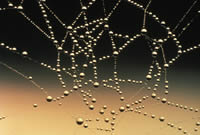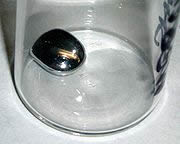Difference between Adhesion and Cohesion
Key Difference: In terms of chemistry and physics, adhesion is the tendency of dissimilar particles or surfaces to cling to one another. Cohesion is the tendency of similar or identical molecules to cling to each other.
Adhesive and cohesive are two words that sound very similar because of the ‘sive’ at the ends, however they are completely different from each other. They are derived from the words ‘adhesion’ and ‘cohesion’ respectively. Both these words are most commonly associated with chemistry and psychics; however cohesion is also used in computer programming. Let’s look at the difference between the two words.
 Adhesive and Adhesion has been listed as an adjective and a noun. As an adjective, adhesive means to tend to remain in memory or to adhere to something. As a noun, adhesive is described as glue, which is known to have adhesive properties that help two substances stick together. Merriam Webster defines, ‘adhesion’ (adjective) as:
Adhesive and Adhesion has been listed as an adjective and a noun. As an adjective, adhesive means to tend to remain in memory or to adhere to something. As a noun, adhesive is described as glue, which is known to have adhesive properties that help two substances stick together. Merriam Webster defines, ‘adhesion’ (adjective) as:
- Steady or firm attachment
- The action or state of adhering
- Agreement to join
- The molecular attraction exerted between the surfaces of bodies in contact.
In terms of chemistry and physics, adhesion is the tendency of dissimilar particles or surfaces to cling to one another. The most commonly known adhesive is glue, which is used to stick two different surfaces together. The intermolecular forces that cause adhesion can be divided into several types: mechanical adhesion, chemical adhesion, dispersive adhesion, electrostatic adhesion and diffusive adhesion.
In mechanical adhesion, adhesive materials fill the pores of the surfaces and hold surfaces together by interlocking. Chemical adhesion requires bonding at a molecular level, where two materials join and form iconic, covalent or hydrogen bonds upon contact and hold together. In dispersive adhesion, two materials are held together by van der Waals forces: the attraction between two molecules, each of which has a region of slight positive and negative charge. Dew is an example of dispersive adhesion. Electrostatic adhesion is when conducting materials pass electrons to form a difference in electrical charge at the join. This is similar to a capacitor, which creates electrostatic force in between the materials. Diffusive adhesion is when two materials merge and form a new material at diffusion. This occurs when the molecules of both materials are mobile and soluble in each other.
 ‘Cohesive’ is defined as, “exhibiting or producing cohesion or coherence.” While, cohesion is defined as:
‘Cohesive’ is defined as, “exhibiting or producing cohesion or coherence.” While, cohesion is defined as:
- The act or state of sticking together tightly; especially: unity
- Union between similar plant parts or organs
- Molecular attraction by which the particles of a body are united throughout the mass
Though, cohesion is more popularly used in chemistry it is also used in computer programming. Yourdon and Constantine describe cohesion as the degree to which the elements of a module belong together. Cohesion is a measure of how strongly-related or focused the responsibilities of a single module are.
In terms of chemistry, cohesion is the tendency of similar or identical molecules to cling to each other. It is considered as the opposite of adhesion. Cohesive attraction, intramolecular force or cohesive force is the force that pushes similar molecules to join together and form a strong bond. This force is an intrinsic property of a substance because of the shape and structure of its molecules, which makes distribution of orbiting molecules difficult when the molecules get closer to one another, creating an electrical attraction. Cohesion allows for surface tension, creating a solid-like state upon which low-density materials can be placed. Water and mercury are strongly cohesive.
Image Courtesy: dicts.info, wikimedia.org









Add new comment